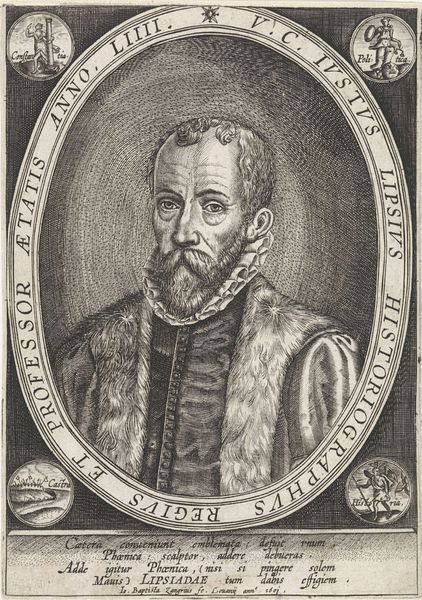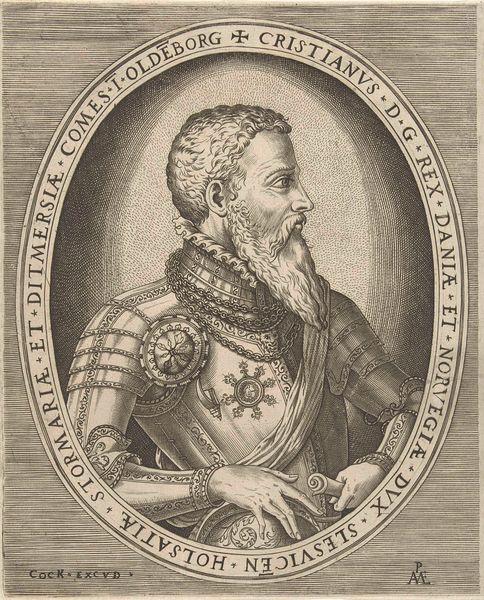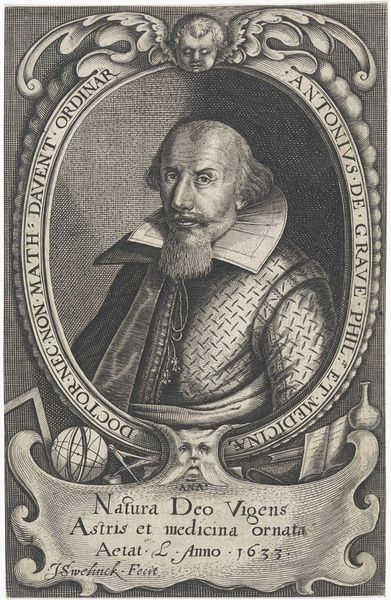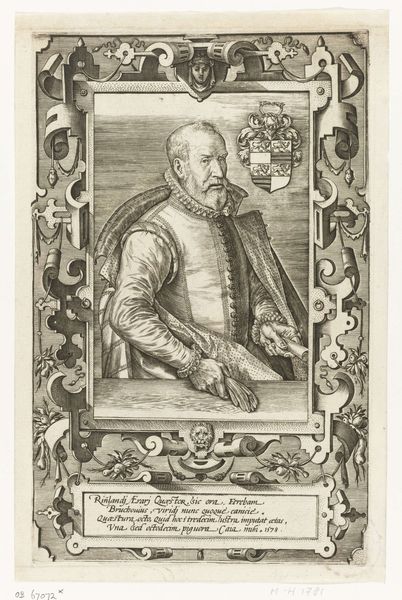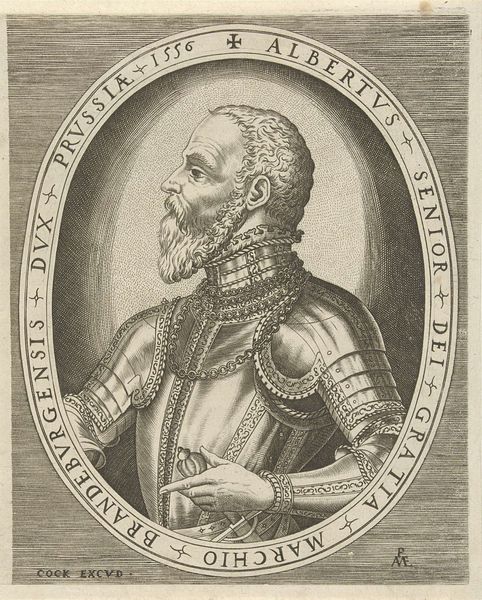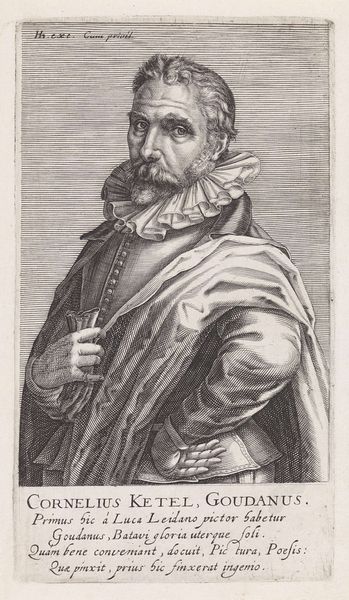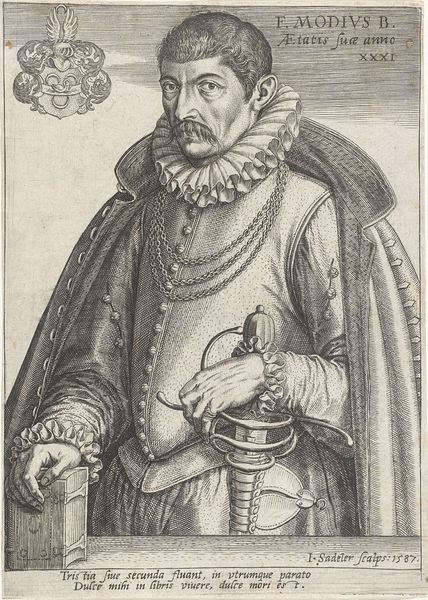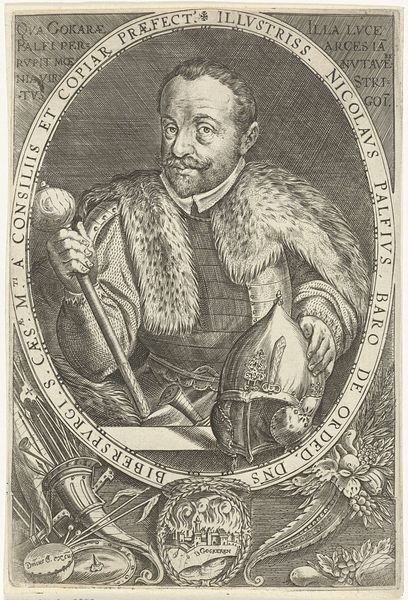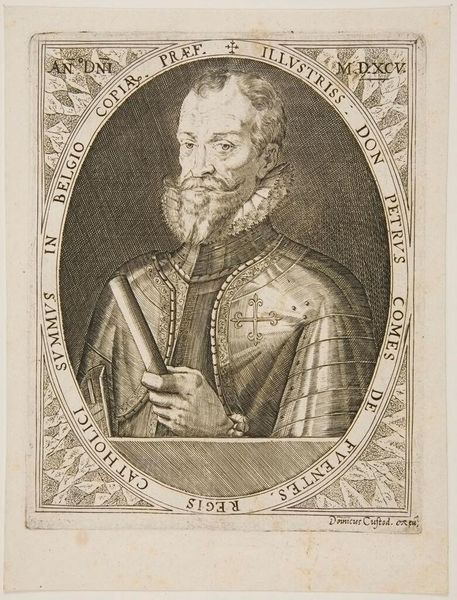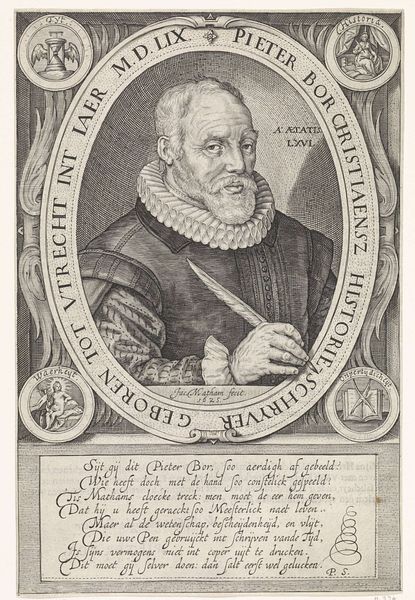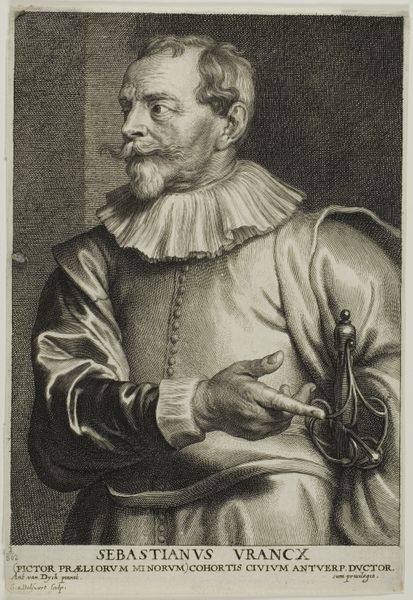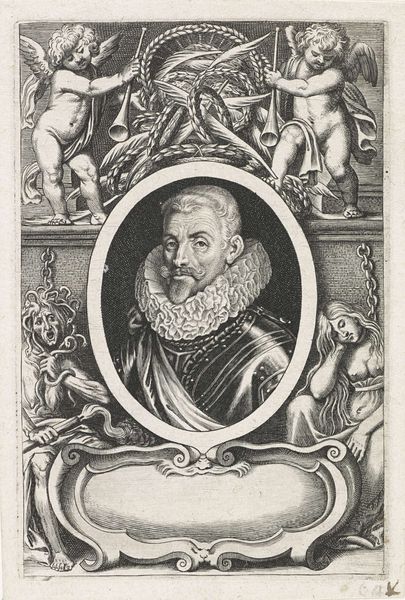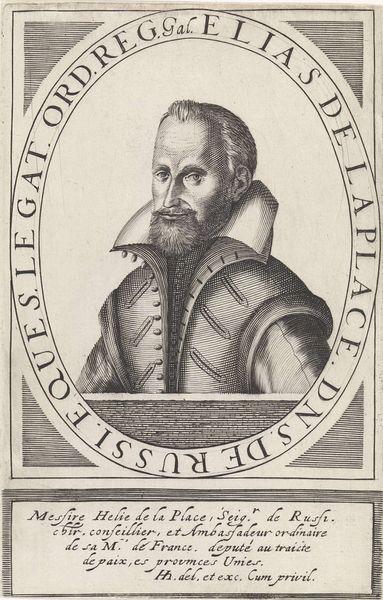
print, engraving
#
portrait
#
baroque
# print
#
old engraving style
#
11_renaissance
#
portrait drawing
#
history-painting
#
engraving
Dimensions: height 114 mm, width 88 mm
Copyright: Rijks Museum: Open Domain
Editor: This is a print called "Portret van Pierre de La Ramée," created before 1624 by Christoffel van Sichem I. It’s an engraving, so mostly black and white. I'm immediately struck by the subject’s intense gaze and the globe he’s holding. What can you tell me about the significance of this piece? Curator: This engraving, like many portraits of intellectuals of its time, is carefully constructed to convey particular messages about Pierre de la Ramée, also known as Petrus Ramus. Let's consider the context: Ramus was a controversial philosopher and humanist during a time of intense religious and intellectual upheaval. The presence of the globe, along with the compass and open book, signifies Ramus’s commitment to science, geography and the pursuit of knowledge through reason, central to Renaissance humanism, but his reforming zeal led to his death as a Huguenot during the French Wars of Religion. How does knowing this affect your view of the piece? Editor: That adds a layer of tragedy, knowing that his pursuit of knowledge and religious beliefs led to his demise. It’s like the objects surrounding him – the tools of knowledge – are also symbols of his vulnerability in a tumultuous world. Curator: Precisely. The inscription around his portrait, "Labor Omnia Vincit," "work conquers all," now seems particularly poignant. It speaks to his relentless intellectual labor, but also highlights the precarity of intellectual work within power structures resistant to change. This portrait functions not just as a record of appearance, but also as an assertion of his intellectual and political identity in the face of oppression. What does that motto communicate to you now, given this information? Editor: It feels like a challenge and a memorial, a reminder that progress and change require constant effort and aren’t always safe. I never would have noticed these things without understanding the history and its relationship to his life and the image itself. Curator: And hopefully, a reminder that his intellectual contributions still speak to our current dialogues about inclusion, equity, and academic freedom.
Comments
No comments
Be the first to comment and join the conversation on the ultimate creative platform.
